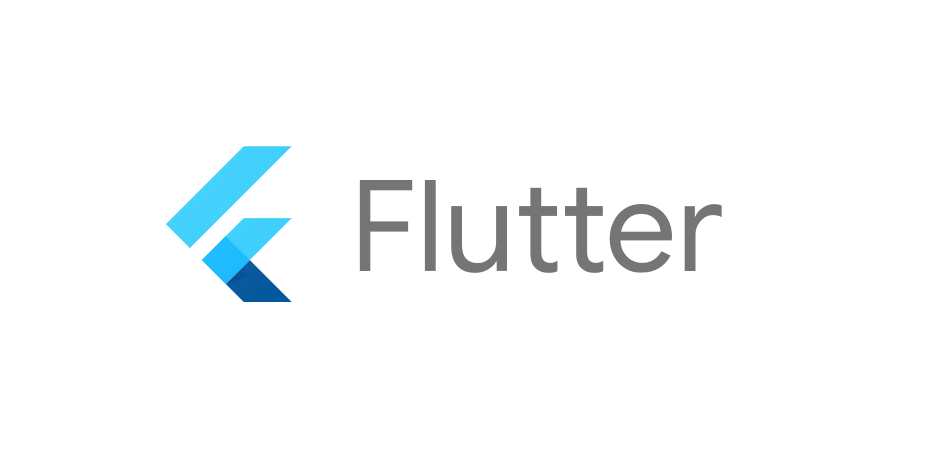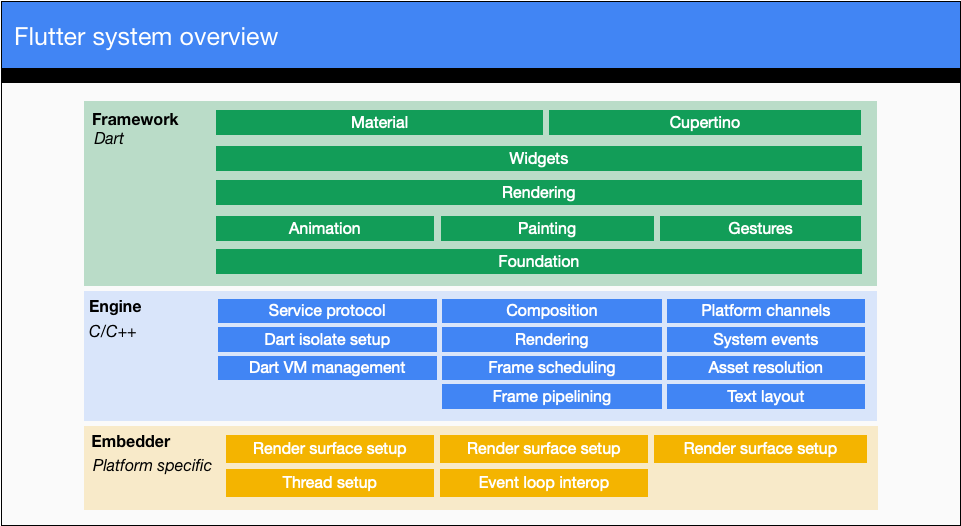“Google is committed to making our digital worlds more usable, beautiful, delightful. Not just for ourselves, but Google wants to help you bring the worlds of your imagination to digital reality.”
Flutter is an open-source mobile application development SDK (Software Development Kit) created by Google. It can be used to develop high performance, high fidelity hybrid applications for mobile devices, tablets running operating systems such as Android and iOS, it is more importantly the primary method of creating applications for Google Fuchsia which is also open source. The keyword here being “open source software” for which the original source code is made freely available.
It is Google’s first portable UI platform or toolkit for designers, developers and creative coders to building aesthetic, natively compiled, easy access applications and digital content across all platforms, be it mobile phones, smart watches, car systems, web applications, tablets, televisions and desktop/ laptop from an original single codebase for an ambient computing world. It enables smooth and easy cross-platform mobile app development for Android and iOS platforms; all you need is a single code base and ability for performance on any device or platform.
Flutter’s Framework Architecture
Let us see what the framework comprises of to begin with:
Dart Platform
Flutter apps are written in the Dart language. They make use of “many of the language’s more advanced features running on just-in-time execution engine”. Fast developer experience is what each one is looking for without compromising the quality.
The Power of Flutter, It’s Engine
Flutter’s engine is primarily written in C++. It provides a low-level rendering support using Google’s Skia graphics library. The Flutter Framework gives access to a new, responsive framework with a varied set of platforms, track layout and foundation of building new and optimised widgets. Google Fonts is also available on Flutter. Can you imagine 34 Trillion fonts to start with?
Basis of the Foundation Library
The Foundation library in Dart, provides backward compatibility in order to supporting future designs and functions. APIs and numerous interfaces to communicate with the primary engine. It’s a “build as you grow approach” which makes it stand out easy and ergonomically.
The Motto is Simple- Everything is a Widget
Flutter has an in-depth collection of visually appealing, structurally balanced, interactive library of widgets. This feature enables developers to build UIs (User Interfaces) more quickly and easily.
Also do not forget, most UI is basically text; WYSIWYG is an acronym for “what you see is what you get.” But more than the seeing part of it, Flutter is all about the feel, aesthetic, design part of it. It allows updated code assimilation into ongoing Dart Virtual Machine, enabling quick reflection of the Accessibility, Basics, Material Components and Interaction Models in line with styling and text.
Benefits of Flutter
Now, let’s take a look at some of the advantages that mobile app owners obtain by using Flutter for their app.
Multi-Paradigm Programming Architecture
Essentially, Flutter follows a multi-paradigm programming architecture (Functional, Event driven, Reactive, Imperative, Declarative, etc.) where the UI contents are updated automatically when the variables in the code are updated speeding up time considerably.
Editing
You can change the logos, buttons, each and every pixel on screen can be controlled, changed, tweaked, replaced in real time basis.
Faster Code Writing
For developers, Flutter presents the opportunity for faster and more dynamic app development. Keeping in mind, simplicity to make changes into the code and reflecting as you type in real time basis. Google calls it Hot reload. It gives developers the freedom to add new features and fix bugs in a ‘type as we speak and see as you type’ manner. With added speed and flexibility, an app can take 2-3 months starting from scratch and every step can be visualised like walking with a flashlight in the dark.
Flexible Framework
The framework is extremely flexible from the word go, as it offers a library of scalable widgets that incorporates dynamism for the developer’s advantage. Developers can tap into their artistic side for app designs with ease.
Two Platforms One Effort
Only one codebase is written by the developers for both, Android and iOS platform – the same app can be deployed on two platforms.
Testing
Since Flutter can be deployed on both platforms, the effort for testing also reduces. Quality Assurance will need to do less work as they have only one app to check.
Flutter in 2020 and Beyond – How is Flutter Going to Evolve?
How many of you care about your app size? Developers, users, anyone? If you remember the term used at the start (hint: Less is more), we do care about giving away our storage capacity across devices. Flutter enables you to save space and time.
Flutter makes it a cakewalk for app development and allows developers to focus more on the user and less on the device. It enables team contribution as it is open source it is bound to grow every single minute of so many developers, engineers and artists across the paradigm contributing to Flutter. Beautiful, Fast, Open, Productive are the four pillars of Flutter. Google plans to invest more in terms of control, performance and fidelity.
Flutter allows you to attach wings to your imagination. Flutter is the canvas on which designers, developers can let their ideas, colours and thoughts flow to create an artistic digital masterpiece, every day. If you wish to understand Flutter better or deploy it in a mobile app, you can contact the App Scoop Vancouver Mobile App Development Team.


